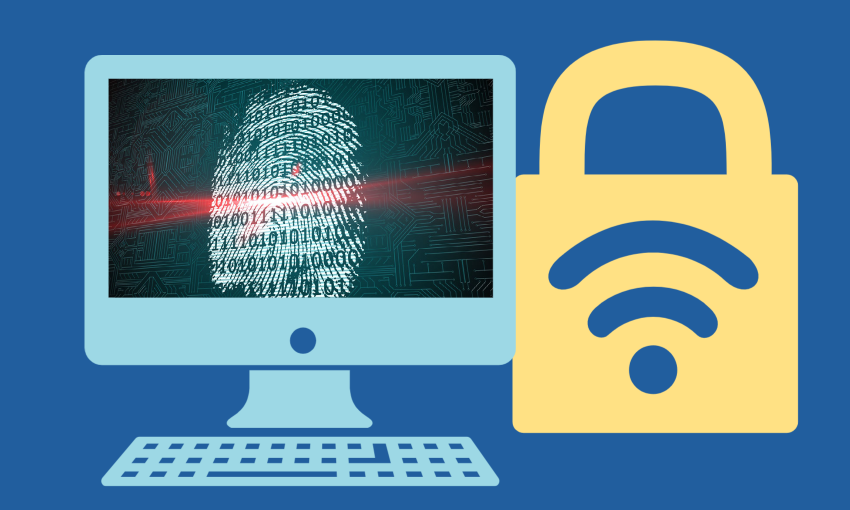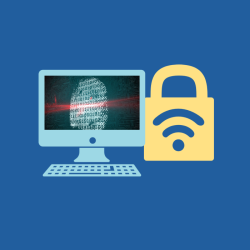Is It Time for a Home Network Security Checkup?

Summer is officially here! As you begin to dust off those barbecue grills and kayaks, consider giving your home network a little love, too.
According to an article from the Office of the Chief Information Officer (EUA credentials required) at HHS, home network security doesn’t stop with your work laptop. In addition to computers, devices such as routers, smartphones, Wi-Fi-enabled baby monitors and cameras, or anything else that connects to the internet within a home are also included in a home network. That’s a lot to keep track of! So, what steps can you take to ward off cybercriminals?
The National Security Agency (NSA) recently released guidelines to assist remote workers in securing their home networks and defending their devices against potential attacks. When combined with the article’s recommendations, the following guidelines can enhance your overall security posture:
- Keep devices up to date: Regularly update the operating systems, software, and applications on all devices connected to the home network. Enable automatic updates whenever possible to ensure you have the latest security patches.
- Use strong passwords: “Even if you don’t think there’s anything worth stealing on your computer, a Wi-Fi hacker might disagree,” states the HHS article. Create unique, complex passwords for all devices, networks, and online accounts. Use a password manager to securely store and manage passwords. Enable multi-factor authentication (MFA) whenever available to add an extra layer of security.
- Secure your home network: Change the default passwords and usernames on your home router and Wi-Fi network. Use strong encryption, such as WPA2 or WPA3, for your Wi-Fi network. According to the article, this “provides the most secure wireless network standards with the strongest encryption configurations.” Furthermore, it’s good practice to disable remote management and guest network features if they are not required.
- Employ a firewall: Enable and configure a firewall on your home router to filter incoming and outgoing network traffic. This helps protect against unauthorized access and potential intrusions. “Your operating system and/or security software likely comes with a pre-installed firewall, but make sure you turn on these features,” the article states.
- Use secure Wi-Fi practices: Disable Wi-Fi Protected Setup (WPS) and avoid using open or public Wi-Fi networks, as they can be vulnerable to attacks. Instead, the article says to “consider setting up a personal router Virtual Private Network (VPN) connection for your home wireless network to protect the Internet of Things (IoT) devices that use it to connect to the Internet.” Also, be sure to change those IoT device names so it’s unclear as to which one is which. “That may sound like a rudimentary solution,” the article says, “but someone who’s looking to break into your network may have devices in mind that they see as vulnerable, and you have the ability to muddy the waters slightly.”
- Be cautious of phishing attempts: Be vigilant and exercise caution when clicking on links or opening email attachments, especially if they are unsolicited or from unknown sources. Phishing emails are a common method used to gain unauthorized access to devices or networks.
- Regularly back up your data: Implement a routine backup strategy to ensure critical data is regularly backed up to a secure location. This helps mitigate the impact of potential data loss due to device compromise or hardware failure.
- Enable device encryption: Utilize full-disk encryption or file-level encryption to protect the data stored on your devices. In the event of theft or unauthorized access, encryption adds an extra layer of protection to prevent sensitive information from falling into the wrong hands.
- Limit device exposure: Disable unnecessary services, ports, or features on your devices to reduce potential attack vectors. Only install and use trusted applications from reputable sources.
- Educate yourself and stay informed: Stay updated on the latest security best practices and be aware of emerging threats. Regularly review resources provided by trusted sources, such as the article or the NSA or other cybersecurity organizations, to stay informed about new vulnerabilities and protective measures.
By following these guidelines, OIT remote workers can significantly improve the security of their home networks and protect their devices from potential cyber threats.

